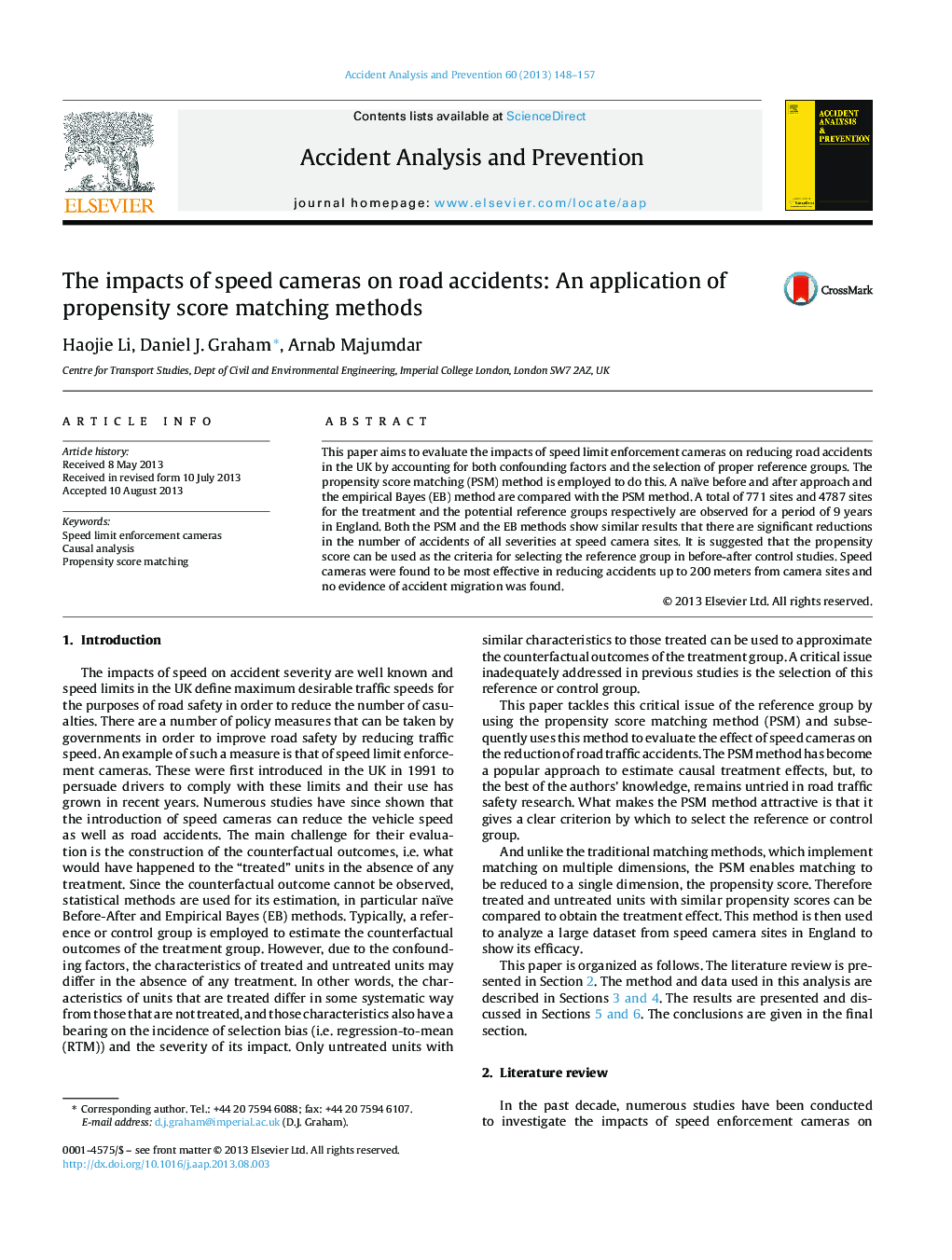| Article ID | Journal | Published Year | Pages | File Type |
|---|---|---|---|---|
| 572417 | Accident Analysis & Prevention | 2013 | 10 Pages |
•We use propensity score matching to evaluate the safety effect of speed cameras.•The propensity score can be used as the criteria for selecting the reference group.•Propensity score matching can improve the performance of the empirical Bayes.•Speed cameras are most effective up to 200 m from camera sites.
This paper aims to evaluate the impacts of speed limit enforcement cameras on reducing road accidents in the UK by accounting for both confounding factors and the selection of proper reference groups. The propensity score matching (PSM) method is employed to do this. A naïve before and after approach and the empirical Bayes (EB) method are compared with the PSM method. A total of 771 sites and 4787 sites for the treatment and the potential reference groups respectively are observed for a period of 9 years in England. Both the PSM and the EB methods show similar results that there are significant reductions in the number of accidents of all severities at speed camera sites. It is suggested that the propensity score can be used as the criteria for selecting the reference group in before-after control studies. Speed cameras were found to be most effective in reducing accidents up to 200 meters from camera sites and no evidence of accident migration was found.
